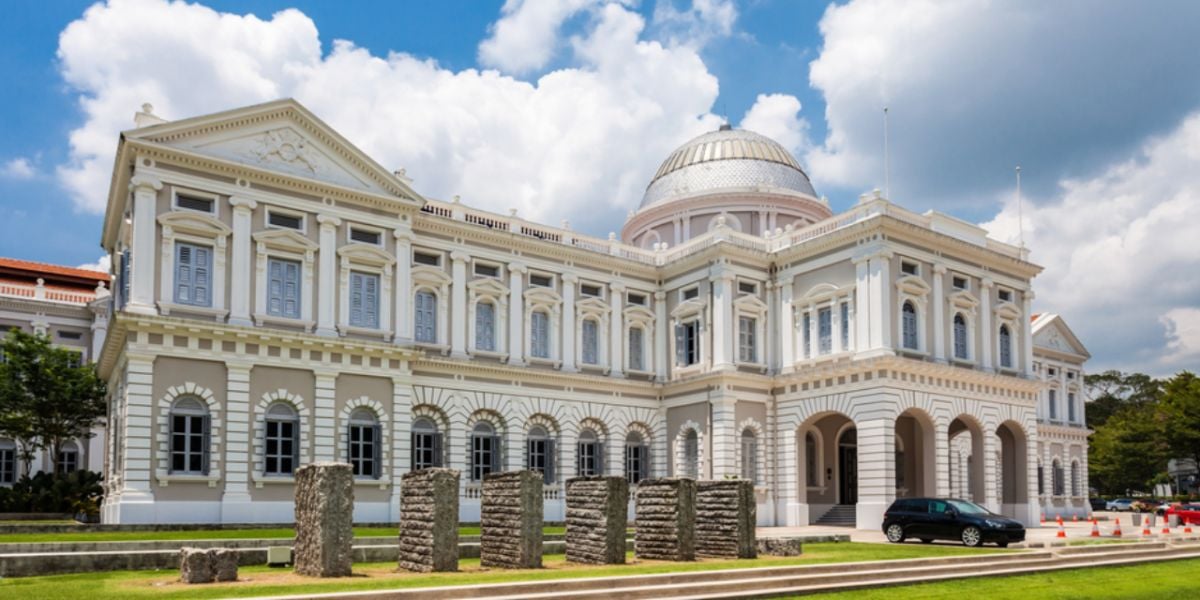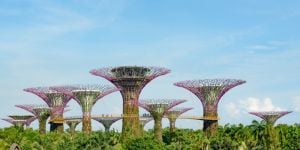
The tiny nation-state of Singapore is known to the world as a symbol of ruthless efficiency and dynamism. A former British colony, the country has played a key role in the region as a trading port and has significantly contributed to the endeavors of the British in Southeast Asia. Over the centuries, Singapore has grown into a multifaceted nation, and the fantastic story of this small but great nation starts in the fourteenth century.
Early history of Singapore
Legend has it that, in the fourteenth century, a Sumatran prince landed on the island and saw a beast that he considered to be a lion. Although the beast was probably a Malayan tiger, he named the island 'Singapura' based on the Malay words 'Singa', which means lion (yes, like Singha Beer), and 'Pura', which stands for city. This discovery started an impressive story that today culminates in one of the international success stories of national growth and development. Unsurprisingly, the lion, or more specifically the 'Merlion' or Sea Lion, has come to symbolize Singapore, a representation of which can be seen at the waterfront close to the financial district. Singapore was home to a Malay fishing village and was inhabited by a group referred to as Orang Laut. Singapore's location at the intersection of sea routes transformed it into a meeting point for vessels from China, Arabia, and Portugal, and the strategic importance of the island became evident quickly as international trade and commerce flourished.
The British in Singapore
In 1818, the importance of trade and politics in Asia prompted the British to appoint General Sir Stamford Raffles to set up a trading station in Singapore. Sir Raffles would eventually play a major role in shaping the destiny of Singapore. To this day, he is omnipresent in the country, with historical hotels and roads named after him. It became increasingly important for the British to set up a port in Singapore, given the growing importance of India within the Empire and the growing trade with China. It was clear that a port was required in order to protect their fleet and to halt the expansionist policies of the Dutch in Southeast Asia, and Singapore provided an ideal location.
Eventually, Singapore developed to become a major element of the spice route and was important both in terms of its military and commercial role. The growth of Singapore did not come without issues regarding law and order, and in response, Sir Stamford Raffles implemented the so-called Raffles Town Plan. Singapore was subdivided into four areas based on ethnic and economic lines. A European town was set up for European traders, Eurasians, and wealthy Asian traders, whilst the Chinese were relegated to Chinatown, which still stands today. Ethnic Indians settled in the north of Chinatown, and Muslims, ethnic Malays, and Arabs were assigned to an area known as Kampong Glam. As Singapore grew in importance, the role of banking and finance became critical, and several banks were set up. In 1832, the capital of Straits Settlements, a trio that also included Penang and Malacca, transferred from Penang to Singapore. The Straits Settlements were considered a colony under the jurisdiction of the Colonial Office in London in 1867. The rule of the British was uninterrupted until 1941.
The World War II effect on Singapore
In December 1941, the Japanese attacked and invaded Singapore. The invasion occurred from the North of Singapore and left the British command with no other option than to surrender. The sheer size of the Allied army in Singapore made this event the largest surrender in Britain's military history and was considered a tremendous blow by Prime Minister Winston Churchill. Singapore had previously been considered impregnable, and the event sent tremors all the way to the War Office in London. The Japanese controlled Singapore but surrendered themselves following the end of the war and Japan's defeat in the hands of the Allies. The British took over until nationalism and changes in international politics steered Singapore towards independence.
Independent Singapore
Growing nationalism allowed Singapore's People Action Party to take power in 1959. The People Action Party was headed by Lee Kuan Yew, Singapore's first prime minister and a revered figure to this day. Singapore was merged with its larger neighbor, Malaysia, as the latter acquired its own independence in 1963. However, the union was short-lived, and in 1965, Singapore became a sovereign nation. Like many newly independent countries, Singapore found itself with grim economic prospects. The division of Singapore from Malaysia and the militaristic positioning of Indonesia resulted in serious economic woes for the new nation. However, Singapore's leader, Lee Kwan Yew, was not fazed by the increasingly difficult situation. The country focused on economic development, exports, and industrialization and encouraged the inflow of foreign capital by incentivizing investment. In this process, Singapore leveraged its strategic location in one of the world's busiest seaways. Although Singapore's location is often mentioned as the cornerstone of its success, the true answer lies in visionary leadership, grit, and the hard-working nature of newly independent Singaporeans. To this day, the value of hard work and humility is celebrated in the country. In the 1970s and 1980s, Singapore experienced rapid economic growth, and once again, the vision of Lee Kwan Yew was instrumental in preventing the social issues often associated with rapid growth. The government set up subsidized housing schemes, a top-notch educational system, and health services supported by the Central Provident Fund, which to this day remains a cornerstone of the Singaporean social security scheme.
Singapore's dynamism and its ability to adapt and ride on successive trends and economic waves continued throughout the 1990s as Singapore steered its economy to manufacturing and high-value-added industries. The country also ensured that it developed and was fully conversant with the trends observed in information technology. Today, Singapore is a hub for innovation in the sector. In parallel to its growing economic clout, Singapore has developed its financial and services sector and is one of the major Asian financial centers after Tokyo and Hong Kong.
Singapore is a true success story. Despite its size and the problems that could have derived from its multicultural nature, Singapore defied the odds multiple times to become one of the most innovative and dynamic places on earth. Its policy-making and flexibility are rarely matched by other countries, and the country has rightly become a poster child for economic and social development.
We do our best to provide accurate and up to date information. However, if you have noticed any inaccuracies in this article, please let us know in the comments section below.








